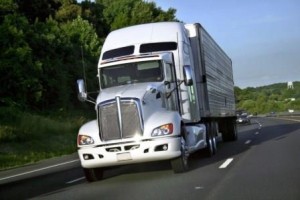Will we see driverless semi-trucks in Michigan?
Driverless semi-trucks in Michigan – as truck accident attorneys, the thought sounds both scary and intriguing. Between the ice and snow, our winters are known to bring and the number of aggressive drivers we are known to have, some might say it’s a recipe for disaster. However, having large autonomous trucks driving on our highways might be a real possibility.
and the number of aggressive drivers we are known to have, some might say it’s a recipe for disaster. However, having large autonomous trucks driving on our highways might be a real possibility.
There has been much discussion about self-driving motor vehicles and the reality of placing them on the road. Google has been testing prototypes of a self-driving car for some time now. In Michigan, Governor Snyder passed legislation that allows companies to test-drive autonomous vehicles on Michigan highways under certain circumstances. Many proponents of autonomous, or self-driving, cars claim that the technology will improve safety on the roads, as computers would be making many of the decisions, significantly reducing human error.
Some cars are already equipped with some of these technologies. For example, some can sense when other vehicles are present, alerting the driver if someone or something is in the way. This is particularly helpful when the driver, for one reason or another, may be distracted, not paying attention to what is happening around them.
Gradually Introducing Driverless Trucks
With all of the talk about self-driving cars, is it too far a stretch to consider self-driving semi-trucks? A number of individuals in the trucking industry have addressed the possibility of having trucks equipped with the technology that could, if all works according to plan, prevent a number of accidents involving semi-trucks, tractor-trailers, and other large trucks that we find on Michigan roads. Many of these discussions surrounding self-driving trucks relate to the level of automation we may expect to see in the future, namely level 3 and level 4.
A large truck with level 3 automation would still require a driver be present, but he or she “could turn over full control of the vehicle under the right conditions for long periods of time.” With level 4 automation, however, the semi-truck could “initiate and complete an entire trip without any driver input beyond entering navigation waypoints or a destination,” even operating without a driver present if the destination was preset, according to a FleetOwner article on the subject.
Outfitting or creating driverless trucks will be a gradual process and will be based in part on how developers can get the technology integrated into the truck/tractor-trailer. The technology that provides for lane departure warnings, smart cruise control, blind-spot detection already exists in smaller passenger vehicles, so in theory, it could be as simple as adapting what already exists into these larger vehicles.
Once the technology exists, the next step would be to develop trucks that can drive themselves for periods of time. The key, however, is that the technology with which these trucks are equipped must allow the truck to operate more safely than it would operate if a person were at the helm, driving it.
One major hurdle: if truck technology collects all of this information about the driving conditions, how others are driving around them, etc., how do you convert all of that data into something the truck can use to perform safely on the road? How would all of that information translate into the operator of the truck (onboard or otherwise) making the right call on the road?
Are Self-Driving Tractor-Trailers Feasible in Michigan?
As we mentioned at the beginning of this post, Michigan is known for its winters – how well would self-driving semi-trucks adapt to the weather conditions it may face? As we all know, Michigan can have pretty unpredictable weather in the wintertime. Whiteout conditions can happen in an instant. Road conditions can also change in an instant, making each passing second absolutely crucial in terms of whether you continue onto your destination, or if you find yourself delayed.
Think about the January I-94 pileup near Galesburg, Michigan that involved almost 200 vehicles, including well over 50 semi-trucks. Would there be technologies in place that would allow the driverless truck to sense the stopped traffic and wreckage ahead, so it would stop in time to avoid it (and also stop in a manner appropriate to the road conditions so that it too wouldn’t become part of the pileup)?
In addition to these considerations, developers of this type of technology would also need to take into account the fact that there are so many other factors (variables) to take into consideration – can you plan, anticipate everything that may or may not happen, especially realizing that most of the other vehicles on the road are operated by people, not machines?
What if the driverless semi-truck comes across an auto accident? Will it be able to shift lanes should one be blocked by law enforcement and first responders at the scene? If it’s a truck with level 3 automation, how easy will it be for the driver to take control of the truck?
All in all, we probably won’t see this anytime soon. However, in the meantime, the technology has to be figured out, and, of course, the operation of driverless semi-trucks must be legal.
